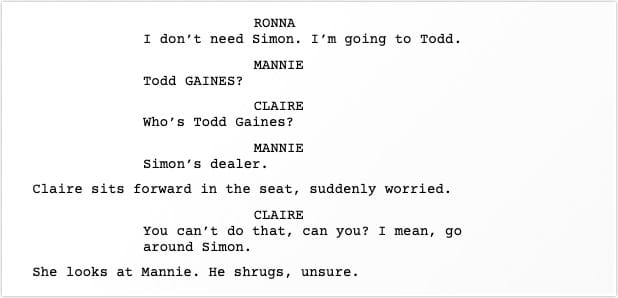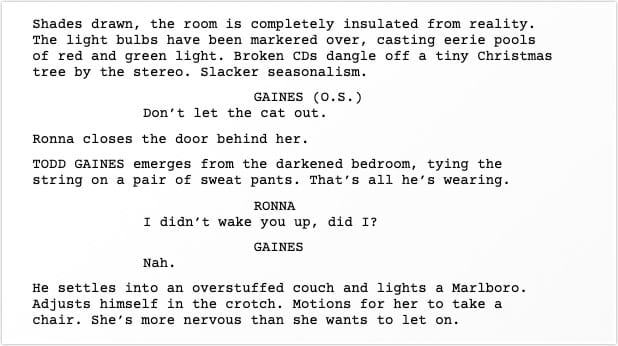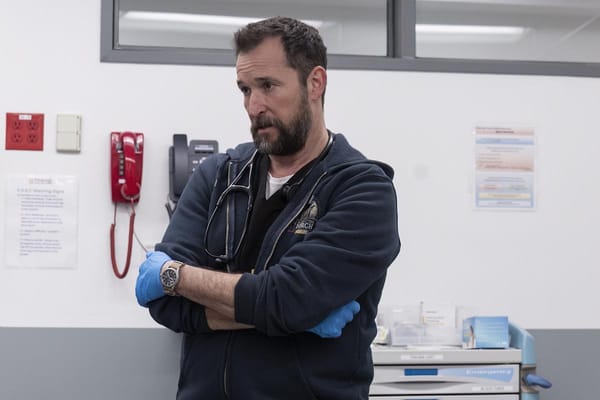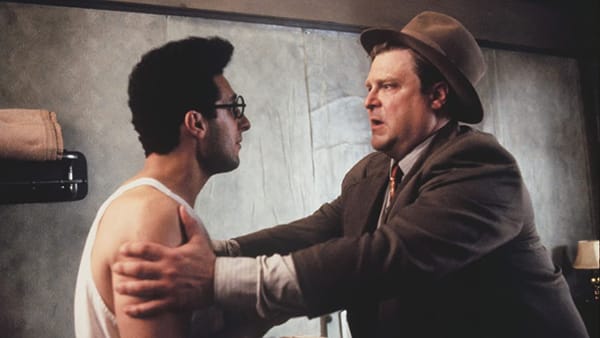3 Tips for Introducing Characters

This week’s rebroadcast comes from 2007 with 3 tips on how to quickly define a character’s personality in your screenplay.
Just how early can you tell a script isn’t going to work? To me, it’s as the first few characters are introduced. If character introductions are not done artfully, the odds of anything else in the script being great are slim.

That’s James Cameron’s terrific script for Aliens, page 3, the introduction of Paul Reiser’s character. Even before Burke speaks, let’s look at what Mr. Cameron told us:
- Burke’s rough age.
- That he’s decent-looking.
- He’s a “suit,” but trying not to look like a suit.
- He seems friendly — but there’s something possibly false about it.
Burke’s first lines of dialogue reinforce our expectation from the character description. “Yes, I work for the company, but I want you to think I’m on your side.”
Pulp Fiction by Quentin Tarantino, the introduction of Eric Stoltz’s character. It’s an unusually long introduction by Tarantino standards — he often just gives you a name. But the scene that follows is long on drug-speak and short on character-revelation, which I suspect is why Tarantino put in the details. Let’s look at what we know about Lance after this paragraph:
- Lance’s rough age.
- He’s scruffy, with a possibly ironic pop-culture sensibility. [1]
- He’s a career drug dealer, but unambitious and not traditionally criminal.
The second and third sentences of Lance’s introduction are the kind of details that often flummox newer screenwriters. After all, you’re not allowed to put anything in a script that can’t be seen or heard, right? How is the audience supposed to know this information?
Tarantino’s cheating. Most good screenwriters cheat a little, particularly when introducing a character.
Keep in mind that an audience watching the movie has the benefit of seeing the actor playing the role, and all the specifics that come with a flesh-and-blood person. Since the screenwriter has mere words, it’s generally okay to throw an unfilmable sentence or two at a particularly important moment. And there’s no more important moment in the script than the introduction of a key character.
So here are some guidelines to get you started.
1. Show and tell
The best character introductions tend to include both a sense of what you see (the character’s physical appearance) and an intriguing tidbit about their personality and/or situation. That’s certainly the case with both Burke and Lance.
You don’t have to give an age range, but it’s common. You don’t have to say the character is good-looking, but if it’s your hero, that’s not a bad idea. While many actors want to play “ordinary people,” they prefer playing “quirkily good-looking” ordinary people. [2]
In other cases, the appearance of a character isn’t as much of a concern. In my script for the never-made Fantasy Island, I needed to include the mother and father of a teenage boy. Obviously, they had to be old enough to have a teenager, but beyond that, what they looked like wasn’t particularly important:

Look for details that have an iceberg quality: only a little bit sticks above the surface, but it represents a huge mass of character information the reader can fill in. The “ie” ending on Mindie’s name suggests booby vapidity, and given that she only has one line, that’s really all the setup she needs.
2. Pick the right scene
For major characters, you’ll often be able to structure a scene so that it showcases a character’s introduction. For Go, we hear about Todd Gaines before we meet him:

From this snippet, we know there’s reason to be concerned. When we get to Todd’s apartment, the set decoration tells us about the man we’re going to meet.

Because of the setup, I didn’t need to describe him as being lean or menacing. By giving him a den, he’s lion-like. The scene does the work. Consider how much more difficult it would be to describe the character if we were meeting him in a supermarket, or at the DMV.[3]
Keep in mind that writing a scene which just introduces a character is generally an awful idea. No matter how funny/dramatic/fascinating, unless the scene has a valid story purpose, it will likely never make it into the film.
Have clever writers sometimes included big character intro scenes simply to land a specific actor, knowing full well that these scenes would never make it into the movie? Probably. But if you can marry a great character introduction to a meaningful story point, you serve everyone better.
3. Not all characters deserve a full-blown intro
Throwing an extra line or two of description for a character introduction is a signal to the reader — “Hey, pay attention to this guy!”
In a given script, there may be four to ten characters who really merit this treatment. But SECURITY GUARD #3 doesn’t. So don’t describe him, unless you need something very specific for a joke or moment. A reader can only handle so much information before getting confused, so your arbitrary choice to make the DRY CLEANER CLERK asthmatic may actually hurt you.
I’ve written a couple of other articles on the issue, so rather than re-capping, let me recommend:
When characters have multiple names
Saying that a Tarantino character likes popular culture is like saying a Wes Anderson character speaks in a wry deadpan. ↩︎
My friend Jordan described an executive secretary character as being, “The prettiest girl on the 44th floor,” which pretty much nails it. ↩︎
In the editing room, we ended up trimming the head of the scene — he’s already sitting down as the scene starts. But the setup let us get into the mood. ↩︎



